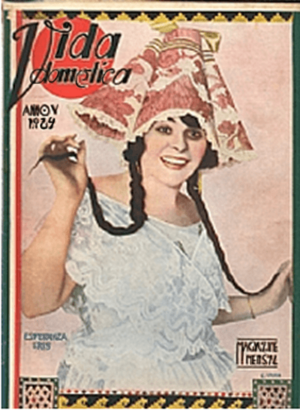Esperanza Iris facts for kids
Esperanza Iris was a famous Mexican singer and actress. Her real name was María Esperanza Bofill Ferrer. She was born on March 30, 1888, and passed away on November 7, 1962. She became well-known for her amazing performances on stage.
Early Life and Career
Esperanza Iris was born in Villahermosa, Tabasco, Mexico, on March 30, 1888. Her birth name was María Esperanza Bofill Ferrer, but she used "Esperanza Iris" as her stage name.
She started her acting career in a theater company called Austri and Palacios. Her first play was Les cloches de Corneville, and she performed in it for five years! In 1902, she acted in another play called La cuarta plana at the Teatro Principal. People loved her performance and respected her talent.
Esperanza Iris became very popular around the world. In Brazil, people called her "the Queen of Operetta" and "Empress of Grace." In Spain, King Alfonso XIII even gave her a special award. Between 1910 and 1911, she went on an international tour to Cuba with the play The Merry Widow.
Building Her Own Theater
In 1918, Esperanza Iris built her very own theater in Mexico City. It was called the Gran Teatro Esperanza Iris. A famous architect named Federico E. Mariscal designed it. The theater opened with Mexico's President, Venustiano Carranza, attending the ceremony.
In 1922, she was honored as the 'Favorite Daughter of Mexico' (Hija Predilecta de México). She also acted in two movies: Mater nostra and Noches de gloria. Her last performance on stage was in the play The Merry Widow. Esperanza Iris passed away on November 7, 1962, in Mexico City. She was buried in the Panteón Jardín.
Lasting Legacy
To remember her amazing career, the state theater in Tabasco was renamed Teatro Esperanza Iris. The theater she built in Mexico City was later called Teatro de la Ciudad. But during the government of Marcelo Ebrard, it was given its original name back: Teatro de la Ciudad Esperanza Iris.
The area around her theater, Mexico City's Historical Center, became a World Heritage Site in 1987. This means it is a special place recognized by the United Nation's Educational, Scientific, and Cultural Organization (UNESCO).
See also
 In Spanish: Esperanza Iris para niños
In Spanish: Esperanza Iris para niños



